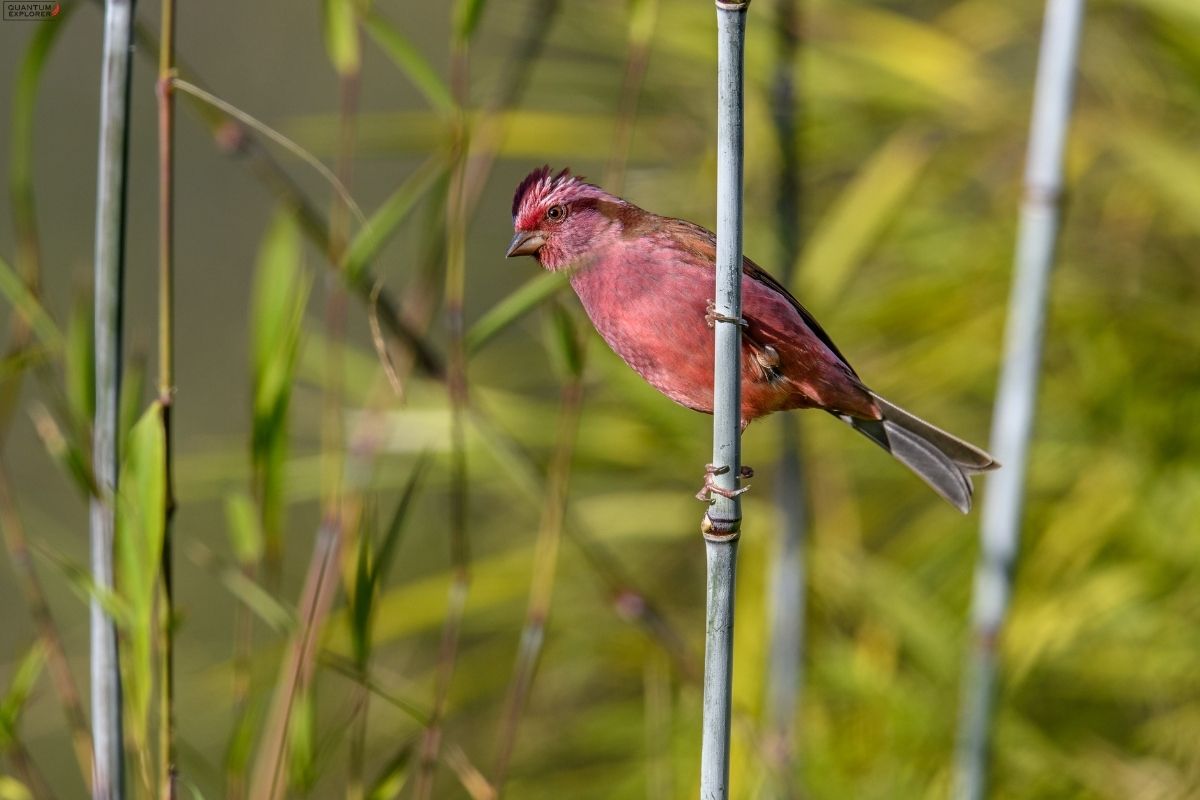Corbett- Kaladhungi Birding Tour: 2 Nights / 3 Days
Corbett- Kaladhungi Birding Tour: 2 Nights / 3 Days
No. of days
3
Trip Type
#
Activity Level
Moderate
Experiences
Best time
October to April
Region
Request free consultation
Our travel planning team will contact you to provide personalized guidance. Submission confirms your acceptance of our privacy policy.
Overview
This short birding tour is perfect for birdwatchers who want to experience the rich forest and river habitats of the Himalayan foothills in a limited time. It is well suited for weekend travelers, beginner birders, and wildlife photographers who wish to explore the diverse birdlife of the Corbett–Kaladhungi region.
Here, we explore the Sal forests of Jim Corbett National Park, the productive banks of the Kosi River, and the lush greenery around Kaladhungi—all of which hold an incredible variety of bird species. From colorful barbets and sunbirds to majestic predators and woodpeckers, this trip packs a lot into 3 days of birding.
The highlight of this region is the Great Slaty Woodpecker, the largest woodpecker in the world. Found in lowland tropical forests of northern India, including the Terai and Himalayan foothills, this bird prefers mature old-growth Sal and mixed forest. Spotting this species is always a special moment for birdwatchers.
Best Time to Visit
The Corbett–Kaladhungi region is good for birding all through the year, but each season offers a different experience. Winters, from November to February, are the best months when the weather is crisp and pleasant, and a variety of winter migrants such as flycatchers, warblers, and thrushes can be seen. In spring and early summer, between March and May, the forests come alive with bird calls as the breeding season begins, making this one of the most rewarding times to watch woodpeckers, barbets, sunbirds, and the impressive Great Slaty Woodpecker. The monsoon months, June to September, bring heavy rain and fewer birds, but the forest is at its greenest and very peaceful, perfect for those who enjoy solitude and lush landscapes. By October, the rains fade, the first migrants return, and the region once again fills with bird activity, making it another good time to visit. Overall, the best birding window is from November to April when species diversity and sightings are at their peak.
Trip Highlights
- Birding in the northern plains forests of India, including Sal forest habitat.
- Observing the Great Slaty Woodpecker – the world’s largest woodpecker.
- Exploring the birdlife of Kosi River, Mohan region, Kaladhungi & Baur Reservoir.
- Key species: Collared Falconet, Greater & Lesser Yellownape, Scarlet Minivet, Crimson Sunbird, Green-billed Malkoha, Himalayan Flameback, Blue-throated Barbet, and more.
- Ideal short birding trip to combine nature, photography, and a quick getaway.
Image Galllery

Itinerary
Day 1 – Arrival & Birding in Mohan Region
Upon arrival we check in our birding lodge, have lunch and relax.
In the evening we begin our birding session in the beautiful forests of the Mohan region on the outskirts of Corbett. This is one of the best places to explore the variety of woodpeckers that thrive here. As we walk through the Sal forest trails, we keep an eye out for the tiny Brown-capped and Grey-capped Pygmy Woodpeckers, Streak-throated Woodpecker, Greater and Lesser Yellownapes, and we will also target one of the smallest raptor, Collared falconet often perched silently. We may also come across Nepal Wren Babbler, Scarlet Minivets and Great Indian hornbill.
Day 2 – Morning Birding at Garjiya Region & Evening at Great Slaty Woodpecker Point
Our day begins with an early morning birding session at the Garjiya region, a landscape where the Kosi River meets rocky edges and riverine forest. This habitat is home to some very special target species. With patience and sharp eyes, we may be rewarded with the elegant sight of an Ibisbill foraging, the Wallcreeper often clinging to steep rock faces, River Lapwing, while the dense thickets can surprise us with the elusive and highly sought-after Nepal Wren Babbler, known for its skulking behavior and melodic calls. Birding here by the river is always a mix of calm moments and sudden delightful discoveries.
In the afternoon and evening, we shift our focus birding around Ranikota, a lush patch known for its hill forest birds. Here, we search the thickets for the Grey-crowned Prinia, enjoy the constant movement of sunbirds such as the Black-throated and Crimson, Great and Blue-throated Barbets, Rusty-cheeked Scimitar Babbler, Taiga Flycatchers, Thick-billed Flowerpecker, Indian Peafowl, Hume’s Bush Warble, Indian Nuthatch, Snowy-browed Flycatcher, Rufous-bellied Niltava, We may also spot the Green-billed Malkoha slipping through the dense foliage.
After birding in the Ranikota region, we make our way to the prime Sal forest habitat for the star attraction of the entire trip—our search for the Great Slaty Woodpecker, the largest woodpecker in the world. Its size and presence are remarkable and spotting it in its preferred tall Sal forests is a rewarding experience. It gets active late evening, While we wait patiently for this spectacular species, we may also encounter other lively birds of the forest including the Himalayan Flameback, Lineated and Brown-headed Barbets, the cheerful Rose-ringed Parakeet, and the Brown Hawk Owl as dusk approaches. It is often a magical end to a long but rewarding day.
Day 3 – Birding around Baur Reservoir & Departure
On our last day, the morning takes us to the Baur Reservoir, a serene wetland surrounded by fields and lightly wooded areas. This diverse habitat is excellent for grassland and water-associated birds. As we explore quietly, we look for small passerines like the West Himalayan Bush Warbler, Dusky Warbler, Chestnut-capped Babbler, and Yellow-bellied Prinia, while keeping an ear out for the song of the Bengal Bush Lark. Along the water’s edge, we often come across a variety of water birds, adding greatly to our checklist and offering wonderful photography opportunities
No. of days
3
Trip Type
#
Activity Level
Moderate
Experiences
Best time
October to April
Region
Overview
This short birding tour is perfect for birdwatchers who want to experience the rich forest and river habitats of the Himalayan foothills in a limited time. It is well suited for weekend travelers, beginner birders, and wildlife photographers who wish to explore the diverse birdlife of the Corbett–Kaladhungi region.
Here, we explore the Sal forests of Jim Corbett National Park, the productive banks of the Kosi River, and the lush greenery around Kaladhungi—all of which hold an incredible variety of bird species. From colorful barbets and sunbirds to majestic predators and woodpeckers, this trip packs a lot into 3 days of birding.
The highlight of this region is the Great Slaty Woodpecker, the largest woodpecker in the world. Found in lowland tropical forests of northern India, including the Terai and Himalayan foothills, this bird prefers mature old-growth Sal and mixed forest. Spotting this species is always a special moment for birdwatchers.
Best Time to Visit
The Corbett–Kaladhungi region is good for birding all through the year, but each season offers a different experience. Winters, from November to February, are the best months when the weather is crisp and pleasant, and a variety of winter migrants such as flycatchers, warblers, and thrushes can be seen. In spring and early summer, between March and May, the forests come alive with bird calls as the breeding season begins, making this one of the most rewarding times to watch woodpeckers, barbets, sunbirds, and the impressive Great Slaty Woodpecker. The monsoon months, June to September, bring heavy rain and fewer birds, but the forest is at its greenest and very peaceful, perfect for those who enjoy solitude and lush landscapes. By October, the rains fade, the first migrants return, and the region once again fills with bird activity, making it another good time to visit. Overall, the best birding window is from November to April when species diversity and sightings are at their peak.
Trip Highlights
- Birding in the northern plains forests of India, including Sal forest habitat.
- Observing the Great Slaty Woodpecker – the world’s largest woodpecker.
- Exploring the birdlife of Kosi River, Mohan region, Kaladhungi & Baur Reservoir.
- Key species: Collared Falconet, Greater & Lesser Yellownape, Scarlet Minivet, Crimson Sunbird, Green-billed Malkoha, Himalayan Flameback, Blue-throated Barbet, and more.
- Ideal short birding trip to combine nature, photography, and a quick getaway.
Image Galllery

Itinerary
Day 1 – Arrival & Birding in Mohan Region
Upon arrival we check in our birding lodge, have lunch and relax.
In the evening we begin our birding session in the beautiful forests of the Mohan region on the outskirts of Corbett. This is one of the best places to explore the variety of woodpeckers that thrive here. As we walk through the Sal forest trails, we keep an eye out for the tiny Brown-capped and Grey-capped Pygmy Woodpeckers, Streak-throated Woodpecker, Greater and Lesser Yellownapes, and we will also target one of the smallest raptor, Collared falconet often perched silently. We may also come across Nepal Wren Babbler, Scarlet Minivets and Great Indian hornbill.
Day 2 – Morning Birding at Garjiya Region & Evening at Great Slaty Woodpecker Point
Our day begins with an early morning birding session at the Garjiya region, a landscape where the Kosi River meets rocky edges and riverine forest. This habitat is home to some very special target species. With patience and sharp eyes, we may be rewarded with the elegant sight of an Ibisbill foraging, the Wallcreeper often clinging to steep rock faces, River Lapwing, while the dense thickets can surprise us with the elusive and highly sought-after Nepal Wren Babbler, known for its skulking behavior and melodic calls. Birding here by the river is always a mix of calm moments and sudden delightful discoveries.
In the afternoon and evening, we shift our focus birding around Ranikota, a lush patch known for its hill forest birds. Here, we search the thickets for the Grey-crowned Prinia, enjoy the constant movement of sunbirds such as the Black-throated and Crimson, Great and Blue-throated Barbets, Rusty-cheeked Scimitar Babbler, Taiga Flycatchers, Thick-billed Flowerpecker, Indian Peafowl, Hume’s Bush Warble, Indian Nuthatch, Snowy-browed Flycatcher, Rufous-bellied Niltava, We may also spot the Green-billed Malkoha slipping through the dense foliage.
After birding in the Ranikota region, we make our way to the prime Sal forest habitat for the star attraction of the entire trip—our search for the Great Slaty Woodpecker, the largest woodpecker in the world. Its size and presence are remarkable and spotting it in its preferred tall Sal forests is a rewarding experience. It gets active late evening, While we wait patiently for this spectacular species, we may also encounter other lively birds of the forest including the Himalayan Flameback, Lineated and Brown-headed Barbets, the cheerful Rose-ringed Parakeet, and the Brown Hawk Owl as dusk approaches. It is often a magical end to a long but rewarding day.
Day 3 – Birding around Baur Reservoir & Departure
On our last day, the morning takes us to the Baur Reservoir, a serene wetland surrounded by fields and lightly wooded areas. This diverse habitat is excellent for grassland and water-associated birds. As we explore quietly, we look for small passerines like the West Himalayan Bush Warbler, Dusky Warbler, Chestnut-capped Babbler, and Yellow-bellied Prinia, while keeping an ear out for the song of the Bengal Bush Lark. Along the water’s edge, we often come across a variety of water birds, adding greatly to our checklist and offering wonderful photography opportunities

